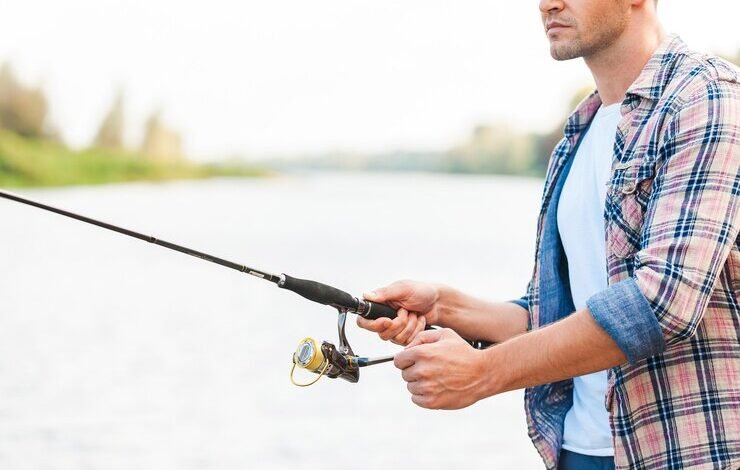Discover the Joy of Fiskning

Have you ever imagined spending your weekends surrounded by serene waters, feeling the gentle tug on your fishing line, and savoring the thrill of landing a catch? Welcome to the wonderful world of fiskning. Whether you’re a seasoned angler or a complete novice, fiskning offers a wealth of benefits and experiences that can transform your leisure time.
Introduction to Fiskning
Fiskning is more than just a pastime; it’s an immersive experience that connects you with nature. It’s the act of catching fish using various techniques and tools, ranging from simple rods to advanced electronic equipment. But why is fiskning so captivating for millions of people around the world? In this post, we will explore the evolution, benefits, techniques, and community aspects of fiskning, providing you with a comprehensive guide to get started.
The History of Fiskning
Fiskning dates back to ancient times when our ancestors relied on it as a primary food source. From primitive spears to sophisticated nets, humans have always found innovative ways to catch fish. Over centuries, fiskning has evolved from a survival skill to a recreational activity. Today, it encompasses a variety of styles, each with its unique charm and history. By understanding its roots, we can appreciate the cultural and historical significance of fiskning.
Benefits of Fiskning
Physical Health Benefits
The physical activity involved in fiskning—casting lines, reeling in catches, and even wading through water—provides a good workout. It can improve cardiovascular health, muscle strength, and coordination. Plus, spending time outdoors exposes you to sunlight, which boosts your vitamin D levels.
Mental Health Benefits
Fiskning is a fantastic way to relieve stress and enhance mental well-being. The peaceful surroundings and rhythmic nature of the activity can induce a meditative state, reducing anxiety and promoting relaxation. Studies have shown that spending time in nature can significantly improve mood and cognitive function.
Social Benefits
Fiskning also fosters social connections. Whether you’re fiskning with family, friends, or joining a local club, the shared experiences and camaraderie can strengthen relationships and create lasting memories.
A Guide to Fiskning
Step 1: Research and Planning
Before heading out, research local fishing spots and regulations. Understanding the types of fish in your area and the best times to catch them can increase your chances of success.
Step 2: Gather Your Gear
You’ll need a basic fishing rod and reel, fishing line, hooks, bait, and a tackle box to start. Invest in quality gear to ensure a more enjoyable experience.
Step 3: Learn Basic Techniques
Begin with simple techniques like casting and reeling. Practice makes perfect, so don’t be discouraged by initial struggles. There are plenty of online tutorials and local classes available to help you learn.
Fiskning Gear and Equipment
Essential Tools
To start fiskning, you’ll need a few basic tools:
- Fishing Rod and Reel: Choose a rod that suits your target fish and environment.
- Fishing Line: Different types of lines are suited for various conditions and fish species.
- Hooks and Bait: Select hooks and bait appropriate for the fish you aim to catch.
- Tackle Box: Keep your tools organized and accessible.
Optional Gear
Consider adding these items to your kit for a more comfortable and efficient experience:
- Fishing Vest: Provides convenient storage for gear and keeps essentials within reach.
- Polarized Sunglasses: Reduce glare on the water’s surface, helping you spot fish more easily.
- Multi-tool: Handy for cutting lines, removing hooks, and other tasks.
Fiskning Techniques
Fiskning offers a variety of techniques, each suited to different environments and fish species.
Fly Fishing
Fly fishing uses lightweight lures called flies. It’s ideal for catching trout and salmon in rivers and streams. The technique requires skill in casting and presenting the fly to mimic natural prey.
Spin Fishing
Spin fishing uses a spinning reel to cast a lure or bait. It’s versatile and suitable for both freshwater and saltwater environments. This technique is great for beginners due to its ease of use.
Ice Fishing
Ice fishing involves drilling holes in frozen lakes and dropping lines into the water below. It’s a unique and challenging form of fiskning that requires specialized gear and knowledge about ice safety.
Environmental Impact
Responsible fiskning practices are crucial to preserving aquatic ecosystems. Overfishing, pollution, and habitat destruction can severely impact fish populations and biodiversity.
Catch and Release
Practicing catch and release helps maintain fish populations. Use barbless hooks and handle fish gently to increase their chances of survival after release.
Avoid Harmful Materials
Opt for lead-free tackle to reduce toxic pollution in waterways. Also, dispose of fishing lines and packaging properly to prevent wildlife entanglement.
Support Conservation Efforts
Participate in local conservation programs and adhere to fishing regulations. Supporting sustainable practices ensures that future generations can enjoy fiskning too.
Fiskning Safety Tips
Safety should always be a priority when fiskning. Here are some tips to ensure a safe and enjoyable experience:
Prepare for Weather Conditions
Check the weather forecast and dress appropriately. Layers are essential for staying warm and dry, and sun protection is necessary on bright days.
Use Proper Gear
Ensure your gear is in good condition. Regularly check your fishing line for wear and replace it as needed. Keep a first aid kit on hand for minor injuries.
Stay Informed
Be aware of local wildlife and environmental hazards. Know how to identify poisonous plants and animals, and stay informed about water conditions and currents.
Fiskning Community
Local Clubs and Groups
Joining a local fiskning club can provide support, resources, and camaraderie. These groups often organize events, share tips, and offer mentorship for beginners.
Online Communities
There are numerous online forums and social media groups dedicated to fiskning. These platforms allow you to connect with fellow anglers, share experiences, and seek advice.
Events and Competitions
Participating in fiskning events and competitions can enhance your skills and provide opportunities to meet like-minded individuals. These events often focus on education and conservation.
Conclusion
Fiskning is more than just a hobby; it’s a rewarding experience that offers numerous physical, mental, and social benefits. Whether you’re seeking relaxation, adventure, or a way to connect with others, fiskning has something to offer. By following the steps and tips outlined in this guide, you can start your fiskning journey with confidence.



